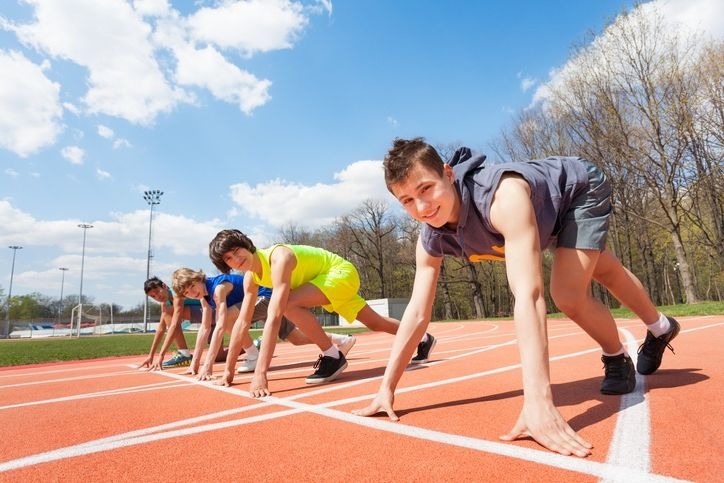Breathing for athlete: how to breathe during sport?
Caution : You must consult your doctor for your health. This page presents only a personal and alternative point of view which should not be considered as an attempt to prescribe medicine.
Respiration is a physiological mechanism for supplying oxygen to the body and releasing it from carbon dioxide.
During sports training, it is important to breathe well.
This allows you to improve your movements while ensuring the supply of oxygen to your muscles.

It should also be noted that poor breathing could cause muscle cramps, an asthma attack, or even severe injury.
Breathing for each form of training
The rhythm of breathing adapts to the body's needs according to the effort.
It is therefore important to know how to breathe during each physical effort.
Breathing during endurance exercise
At the time of endurance, it is cellular respiration that supplies your muscles with oxygen.
During this variant of sport (jogging or swimming), good breathing is determined by a regular breathing rate.
Most of the time, the inspiration is two to three times shorter than the expiration.
Plus, you don't need to hold your breath to the rhythm of your movements.
You need to start slowly by letting your body adjust (warming up).
The correct breathing rate will set in on its own.
Breathing during muscle building
For muscle building workouts, your breathing should follow your movements.
Usually, the exhalation is done during the contraction of the muscle and the inspiration when it is relaxed.
This is the same mechanism that occurs for all exercises that require concentric, eccentric, and isotonic contraction (squats, push-ups, etc.).
So we breathe in on relaxation and we breathe out on the effort.
Regarding isometric contraction exercises, sheathing, breathing is done at a normal pace.
Breathing during intense efforts
For intense workouts that don't last long, like sprinting, your breathing should remain fluid.
However, it does not satisfy your need for oxygen at the moment.
Indeed, during intense exercise, breathing becomes "anaerobic" without oxygen for a short time.
It is only after exercise that you can regain a normal breathing rate.
For this type of effort, it is important to recover optimal breathing with inhalation through the nose and exhalation through the mouth.
Breathing during a stretch or a gentle gym
For gentle gym and stretching exercises, you should adopt slow, deep breathing with the diaphragm.
This breathing rate allows you to supply a good quantity of oxygen to the muscles stimulated during the exercises.
You just need to breathe in deeply through your nostrils and slowly breathe out through your nose.
Some tips for breathing well during training
While practicing physical exercises, you should adopt good breathing.
Breathe through your stomach
Still called abdominal breathing, breathing through the belly is important in contributing to the mobility and ventilation of the diaphragm.
It reduces the possibility of side stitches appearing.
In addition, the concentration during the exhalation allows you to get rid of a significant amount of CO2.
Thus, the free space for oxygen becomes larger.
This then promotes a good supply for your muscles.
There is a very simple exercise to find out if you are breathing through your stomach.
Just lie on your back and put one hand on your stomach and the other on your chest.
When inhaling, your belly should inflate first, not your chest.
Never block your breathing
Blocked breathing is a mistake that is most often seen in beginners.
Indeed, the latter concentrate on the exercise they are practicing and forget to breathe.
Only, the blockage of breathing leads to poor supply of oxygen to muscle tissue.
Which can reduce your physical skills and weaken your muscles.
It is therefore important that your breathing keeps pace with your exercises.
Inhale through the nostrils and exhale through the mouth
Inspiration through the nostrils provides you with many benefits.
In fact, your nasal cavity is responsible for filtering the impurities and germs contained in the air.
This gives your lungs cleaner, healthier air.
In addition, when it's cold, the vessels of your nasal mucosa heat the air you inhale by 4 to 5 ° C.
Which makes it less dangerous for your lungs.
The exhalation which consists in rejecting the CO2 can simply be done by the mouth in the event of intense exertion or by the nose in the event of gentle exertion.
Put the cigarette aside
To have good breathing during sporting activities, it is quite normal to adopt good respiratory hygiene.
This implies that you have to take care of your respiratory system.
If you are a smoker and want to exercise, it is advisable to throw away your cigarettes.
Indeed, the smoke you inhale can only reduce your breath; which will have the effect of reducing your resistance to the effort.
As an athlete, it is therefore important to know some of these tips for breathing well during your physical efforts.
❤ The ultimate guide to breathing
Intermittent Breathing : Discover the method to quickly relieve your anxiety and chronic fatigue (positive effects from the first use).Read also :
Previous article : What are the best respiratory gymnastics exercises?
Next article : Holotropic breathing (rebirth): benefits and dangers?

